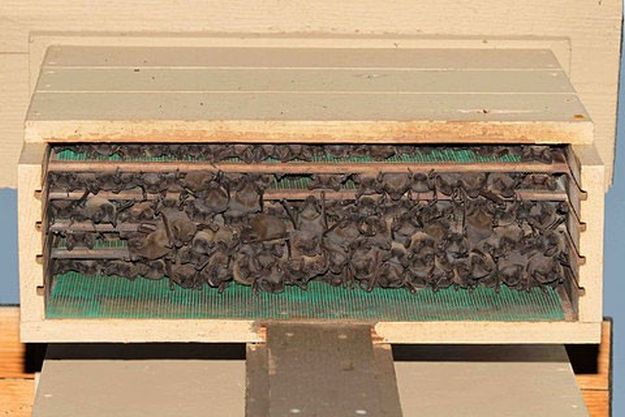Bats are extremely important to our ecosystem. They are the primary predators of night-flying insects, including agricultural pests and mosquitoes. A bat can eat up to 70% of its body weight in a single night. Fruit and nectar-feeding bats are also essential for pollinating many plant species. With that in mind, you still would not want bats living in your attic. They could potentially damage the home and pose a serious health risk.
Bat Roosts
Bats will roost in different places at different times of the year, but some of their favorite locations are; trees, caves, bridges, barns, buildings, and attics. During the summer months, they will roost during the day and come out to hunt at night. Many bat species hibernate in the winter, and while they can usually be found in caves and abandoned mines or tunnels, this is also the most likely time for them to move into your nice warm Milwaukee attic. Once they move in, you will need animal control services to get them out.
The Eight Bat Species Found in Wisconsin
- The Eastern Pipistrelle bat is the state’s smallest bat. It has yellowish brown fur and likes to live in caves, abandoned mines, and rock crevices. It is not commonly found living in attics and roofs.
- The Little brown bat is, as the name suggests, a small bat. It is common throughout the state of Wisconsin and likes to live in the attics of Milwaukee homes.
- The Big brown bat is about twice the size of the little brown bat and is more common in southern areas of the state. Like the little brown bat, it also roosts in attics and buildings and hibernates in colonies.
- Red bats are about the same size as big brown bats but their fur has a rusty red color. They roost in trees during the day and, unlike the big brown bat, they are solitary animals and do not hibernate in large colonies but rather migrate south in the winter. You will not find them moving into your home for the winter.
- The silver-haired bat is another summer visitor to Wisconsin and migrates south during the colder months. The name comes from their distinct, almost black, fur with white tips.
- Another migratory bat is the Hoary bat. It is larger than the brown bat and has fur that ranges in color from greyish yellow-brown to grey with grey-white overtones.
- Northern long-eared bats are more solitary than many other bat species and congregate in small groups. They usually roost in caves at night and are found in forested areas and along streams and lakeshores. In summer they can be found roosting in buildings during the day.
- Lastly, the Indiana bat is an endangered species that is difficult to distinguish from other bats. These bats also hibernate in colonies during the winter.
Bats are essential for a healthy ecosystem but having them living in your attic is unhealthy and can pose a serious risk. It is not easy to remove a bat colony from your attic and the best solution is to call in the animal control experts who will, safely and effectively, remove the bats for you.
As part of our humane wildlife removal service, Skedaddle removes entire bat colonies and ensures that breeding bats do not leave behind any babies. We will also identify and eliminate any potential bat entry points, and clean and clear material contaminated by bat droppings or carcasses. For more advice on Milwaukee animal control see more of our blog posts covering a wide variety of subjects.



